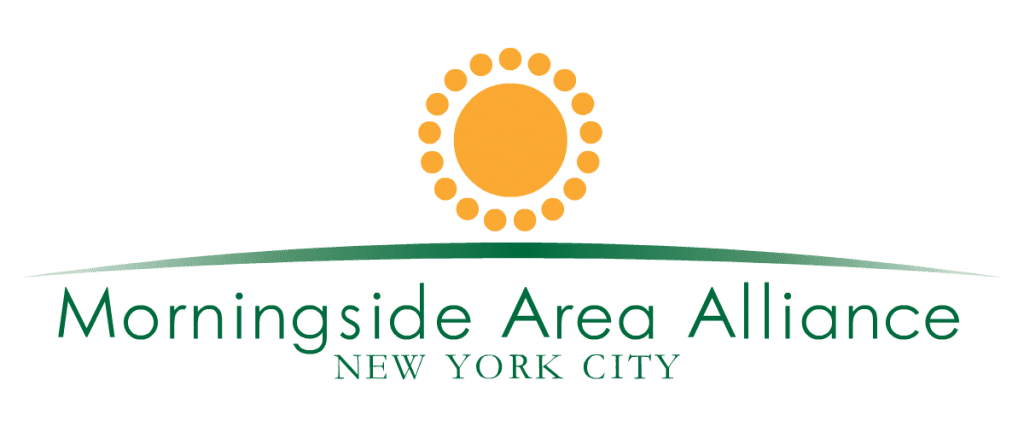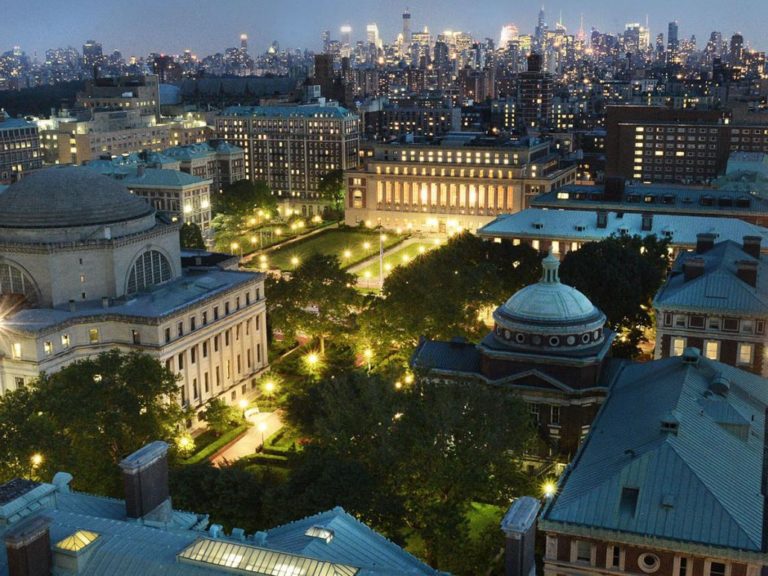After taking in the magnificence of the Cathedral of St. John the Divine and the buildings in the neighborhood, your next stop involves more artistic and creative appreciation. Continue north on Amsterdam Avenue until West 116th Street, and enter the Columbia University campus to turn your attention to the splendor and academia that permeates the air in Columbia University. Columbia University was founded in 1754 as King’s College by royal charter of King George II of England. It is the oldest institution of higher learning in the state of New York and the fifth oldest in the United States.
Today, Columbia University is an international center of scholarship, with a pioneering undergraduate curriculum and renowned graduate and professional programs. Among the earliest students and trustees of King’s College were John Jay, the first chief justice of the United States; Alexander Hamilton, the first secretary of the treasury; Governor Morris, the author of the final draft of the U.S. Constitution; and Robert R. Livingston, a member of the five-man committee that drafted the Declaration of Independence. After the American Revolution, the University reopened in 1784 with a new name—Columbia—that embodied the patriotic fervor that had inspired the nation’s quest for independence. In 1897, the university moved from Forty-Ninth Street and Madison Avenue, where it had stood for fifty years, to its present location on Morningside Heights at 116th Street and Broadway.
For those in Columbia on a weekday, the Visitors Center, located in Low Library, offers free guided tours at 1:00 p.m. Monday through Friday, and pamphlets available for self-guided tours. These pamphlets can also be found at: http://www.columbia.edu/content/self-guided-walking-tour.html
Columbia University Visitors Center
213 Low Library
2960 Broadway
New York, NY 10027-6902
Hours: Open Monday through Friday from 9:00 a.m. to 5:00 p.m.
Free guided tour at 1:00 p.m. Monday through Friday.
212-854-4900
http://www.columbia.edu/content/self-guided-walking-tour.html
Entering from the West 116th and Amsterdam Ave, turn right to see the first stop on the tour, Buell Hall.
Buell Hall
Located directly west of Low Memorial Library, on the second floor of the building is Columbia’s Maison Française. Check out our blog post “At Columbia University: Maison Française” for the rich and vivid history of the organization. Heading out of Buell Hall, head North to the next stop, St Paul’s Chapel.
St. Paul’s Chapel
St. Paul’s Chapel, designed by I. N. Phelps Stokes as a young architect, is a masterpiece of early-twentieth-century American religious architecture. Built in 1904 and designated a New York City landmark in 1966, St. Paul’s Chapel is nondenominational and provides a beautiful space for hundreds of events each year, including weekly religious services, weddings, lectures, memorials and concerts. The interior of St. Paul’s Chapel features furniture carved in Florence and stained glass designed by Maitland Armstrong and John La Farge. The Peace Altar was designed by George Nakashima. The entire floor of the building is paved with marble terrazzo in which are set fragments of porphyry, verd antique, and yellow marble. Three windows in the apse, the work of American artist John LaFarge, depict St. Paul preaching to the Athenians. Turn right to continue the tour at The Miriam and Ira D. Wallach Art Gallery.
South Lawn
Now in front of you to the south, was the home of the athletic playing fields until 1922. And if you’re visiting on a balmy spring day, it’s a great place to sit and take in the University. Columbia
alumnus Lou Gehrig played baseball here. The athletic fields are now located at Baker Athletics Complex (218th Street and Broadway). The uptown complex includes our football stadium, soccer stadium, baseball and softball diamonds, boathouse, and tennis center. The original design of Columbia did not contain South Campus, but in the early part of the twentieth century when the land was acquired, it became the site of the University’s sports fields and dormitories. When you’re ready, it’s worth going up the steps across the path from Buell Hall.
Low Memorial Library
This prominent building, celebrated as an example of purely classical architecture, was completed in
1897 and served as the main library until 1934. The Low Memorial Library vestibule is the grand, high-ceilinged space outside the Visitors Center, decorated with a statue of Athena and other traditional symbols of learning. Today this landmark building functions as the administrative center of the University and the offices of the President and the Provost. Continue straight ahead into the Low Memorial Library Rotunda. One of the most impressive features of Low is its rotunda topped by the largest all-granite dome in the country and designed to recall the Pantheon in Rome. The rotunda, originally the Library’s main reading room, is now used for exhibitions and major University events. Built in the Roman classical style, Low Library appears in the New York City Register of Historic Places. A broad flight of steps descends from Low Library to an expansive plaza, a popular place for students to gather. Low Plaza has been described as one of the great urban spaces in America. It was built to resemble a Greek amphitheater and is ideal for outdoor events including concerts, theatrical performances, and fairs. Students flock to the plaza steps to sunbathe, socialize, and study, making it in the words of a leading architect, a true “urban beach.” Watching over the plaza is Alma Mater, a bronze sculpture by Daniel Chester French, famous for his statue of Abraham Lincoln at the Lincoln Memorial in Washington, D.C.
Heading west from the library, the building to the right of you will be Earl Hall.
Earl Hall
The building directly west of the Low Memorial Library, Earl Hall is Columbia’s religious and community service headquarters. Dedicated in 1902, it is one of the oldest buildings on campus. The University Chaplain and campus ministers have offices here along with more than 50 religious, political, and community service groups. Through these organizations, approximately 850 student volunteers working with Columbia’s Community Impact program, serve more than 1,000 people weekly, addressing community needs for tutoring, social service referrals, food, and more. Once you view Earl Hall, you’re ready to hit the pavement of Morningside Heights again.

